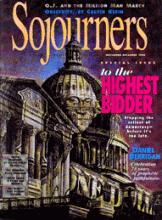When the mode of the music changes,
the walls of the city quake.
-Plato
With the September double-whammy of the Rock-and-Roll Hall of Fame opening in Cleveland and the 10-hour PBS documentary history, rock-and-roll music has become, if not quite respectable, at least institutionalized. And all of this attention comes 40 years after the emergence of Elvis on the national scene.
Of course rock and roll was institutionalized in the private sector almost from the beginning. By the time of the mid-1960s Beatles-driven explosion, the people in the top floors of those New York-and-LA glass towers knew that rock was a long-term profit center. But mainstream cultural recognition, of the kind associated with museums and public broadcasting, has been a long time coming. For instance, despite all the public grants thrown at dead European opera companies or snobby performance artists, not one single national arts and humanities dollar has been directed at independent rock and roll. And it looks like there never will be.
The miracle is not that rock and roll has lasted this long without the validation of the official culture, or that it is now receiving some of that validation. The miracle is that, four decades down the line, rock and roll-or the noises we can associate with the term-is still the prime carrier of rebellion, outrage, and idealism in American culture. Rock-and-roll culture has always rested upon a founding triad of racial miscegenation, class antagonism, and gender confusion. It was so in the days of Elvis and Little Richard, in the middle era of Springsteen and Prince, and so it is in today's world of hip-hop, techno, and grunge.
Read the Full Article
